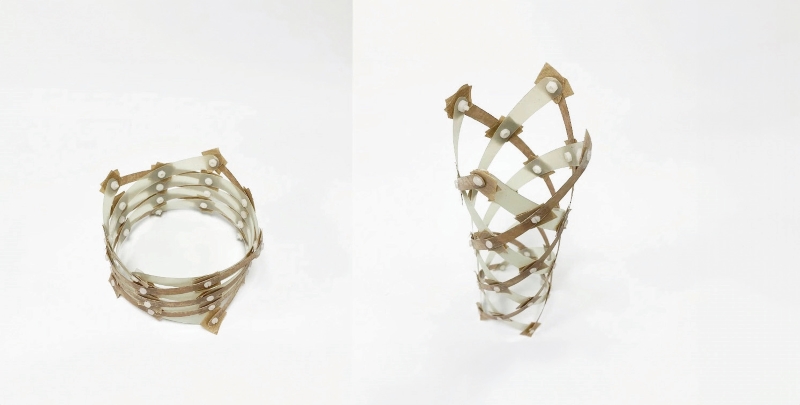Portable antennae for disaster relief
A portable antenna that packs down to a small size and shifts between two configurations without using additional power could be quickly deployed after disasters to restore communications.

The device would communicate either with satellites or other instruments on the ground.
The inventors at Stanford University, USA, and the American University of Beirut, note that existing solutions are typically heavy, metallic dishes that require significant energy.
The antenna is essentially a hollow, helical ring made of glass-reinforced epoxy selected for its dielectric properties. A conductive material runs through it to send out signals.
It stands just over 2.5cm tall and spans about 13cm across. In this shape, it is able to reach satellites with a high-power signal sent in a particular direction. When stretched out to about 30cm tall, the device sends a lower power signal in all directions, more like a Wi-Fi router.
Shifting between these two states is said to be as simple as pulling or pushing on the antenna. The specific size and shape will determine which frequencies those two states communicate across.
To be deployed in the field, the antenna would need to be paired with a transceiver to send and receive signals.
Professor Maria Sakovsky at Stanford says, 'Because we wanted the antenna to be able to collapse into a packable shape, we started with this structure that led us to a very untraditional antenna design. We’re using shapes that have never been used on helical antennas before, and we’ve shown that they work.
'We envision the antenna to be used in areas with low infrastructure, where it could enable both device-to-device and ground-to-satellite communication through physical shape change. The antenna is lightweight and portable and made from materials [that are] robust to a broad range of environments.'
The antenna weighs 39g while the ground plane weighs 737g. Sakovsky adds, 'Typical metallic dishes used for impromptu communications can weigh up to 20kg.'
She explains, 'The fibre angle in the material is tuned to give the desired bistable response...meaning that two geometries can be maintained passively without a continuous energy input. The bistable characteristic of the structure also means that a human can reconfigure the antenna without needing to be precise, as the structure will return to one of its stable configurations.'
The design was reportedly enabled by coupling the structural and electromagnetic response of the antenna.
She says, 'This research revealed operating geometries for helical antennae that have not been previously explored in the literature. This allowed the combination of two functionalities into a single antenna structure. Without this result, large stretching of the conductors would be required to obtain multiple functionalities and the antenna structure would not be robust to environmental loads.
'Additionally, fibre-reinforced composites not only created lightweight, robust structures but allowed tailoring of the material to achieve bi-stability.'
Although no field testing has been conducted so far, she says, it has been tested in a lab environment. They have prototyped the antenna, ground plane and the feeding network, and it is anticipated that the antenna could use off-the-shelf transceiver technology.
Sakovsky says, 'We are excited to expand this work to multi-stable antennae, with hundreds of operating states, to initiate the development of morphing intelligent surfaces. These surfaces can steer electromagnetic beams and/or change their polarisation schemes. The goal is to develop more efficient communications with higher data rates while minimising the power requirements.
'The requirements for such [low-infrastructure] areas overlapped with communication systems typically deployed on satellites. These are both resource-constrained environments demanding lightweight, energy-efficient and high-performance solutions. As such, we were able to transfer space technology down to the ground.'







